Best Conveyor Belt Sushi Chains in Tokyo: 10 Famous Eateries

Discover 10 conveyor‑belt sushi chains in Tokyo offering delicious, affordable sushi, from Kura Sushi to Sushiro, with locations in Shibuya, Ginza and beyond.
Conveyor Belt Sushi Restaurants in Tokyo
Tokyo boasts many conveyor belt sushi restaurants that offer delicious and affordable sushi.
From Sushiro, which has branches all around Tokyo, and the popular Kura Sushi, to Nemuro Hanamaru, which offers stylish sushi bars, the options are endless.
Discover Tokyo's top 10 sushi chains and their major branches along with some hidden gems. At the end, we added a list of useful Japanese phrases for ordering at conveyor belt sushi restaurants.
Tokyo's Top 10 Sushi Chains and Their Major Branches
1. Sushiro: Shinjuku, Shibuya, and Many Other Tokyo Branches
2. Kura Sushi: Shinjuku, Shibuya, Tokyo Skytree, and More
3. Ganso Zushi: Asakusa, Shinjuku, and Others
4. Mawashi Sushi Katsu Midori in Meguro: With Daily Changing Menus
5. Nemuro Hanamaru: Hokkaido Sushi near Tokyo Station
6. Kaiten Sushi Toriton: Sushi from Hokkaido at Tokyo Skytree
7. Heiroku Sushi: Sendai Flavors in Shinjuku and Shibuya
8. Maguro Ton'ya Miura Misaki Port: Ueno
9. Sushi Choshimaru: Near Tokyo Dome
10. Uobei: Branches in Shibuya and Kichijoji
Japanese Sushi Menu and Translation Guide
How to Ask for Sushi Without Wasabi in Japanese
1. Sushiro: Delicious Sushi!
Shinjuku, Shibuya, and Many Other Tokyo Branches
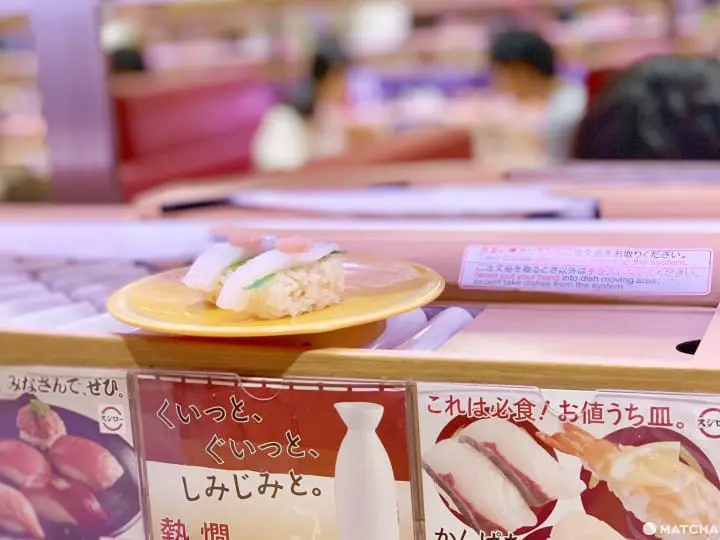
Sushiro originated from a sushi restaurant called Taizushi located in Osaka. The sushi chefs at that restaurant wanted to share the charm of sushi with more people, which led to the story of the birth of Sushiro, a conveyor belt sushi chain.
The establishment has its own system to ensure the freshness of ingredients and periodically offers limited-time menu selections. Every visit brings something new, and many Japanese office workers often treat themselves to a round of sushi after work.
We recommend downloading the Sushiro app (App Store, Google Play), where you can check the current queue status at nearby branches and make instant reservations without the need for membership registration.

Limited-time squid and cod roe sushi prepared with special red vinegar, adding a gentle layer of complexity to the ingredients (100 yen).
Sushiro's delicious ramen, chewy and slightly firm noodles, topped with tender, thinly sliced seabream and a fragrant broth (330 yen).

They also offer a limited-time Lemongrass Strawberry Parfait. With an aroma of lemongrass, it had a sweet-tart taste of strawberries, and a texture resembling ice cream (280 yen).
A meal at Sushiro costs between 2,000 and 3,000 yen.
Major Sushiro Branches in Tokyo
*Click on the link for Google Map information.
Shinjuku Branches:
- Sushiro Shinjuku Station East Exit
- Sushiro Shinjuku 3-chome
- Sushiro Shinjuku Nishiguchi
- Shibuya: Sushiro Shibuya Station Square
- Asakusa: Sushiro Asakusa
- Akihabara: Sushiro Akihabara
- Ginza: Sushiro Yurakucho
Official website: Sushiro
2. Kura Sushi: Shinjuku, Shibuya, Tokyo Skytree, and More
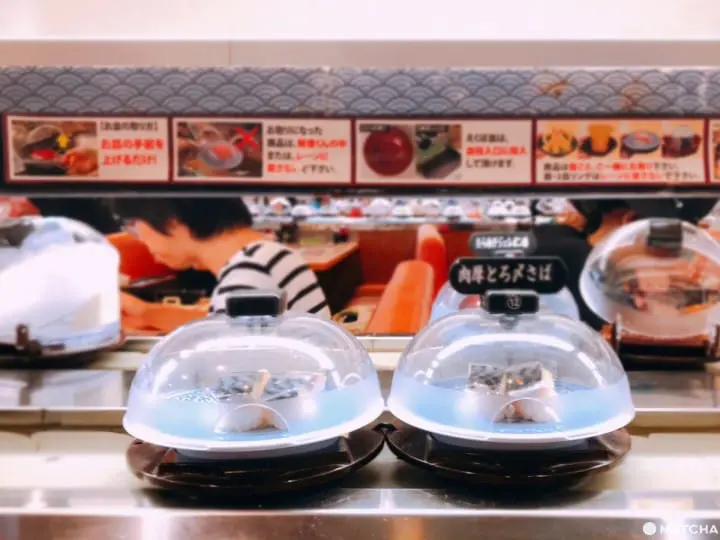
Kura Sushi, with over four hundred branches in Japan, is most dedicated to providing delicious sushi at affordable prices.
They proudly declare the absence of artificial chemicals in their offerings, even reducing the salt content in soy sauce by 25% compared to the standard. They have even developed the "Freshness-kun" system to ensure that sushi stays fresh when delivered to customers and remains free from airborne bacteria.

The store's Bamboo Princess Sushi series includes shrimp served in a bowl made from bamboo. The portions are generous, and the dish is seasoned with a Japanese-style sauce called Ishizawa's. The mayonnaise brings out the sweetness of the shrimp, making it a satisfying dish (100 yen).
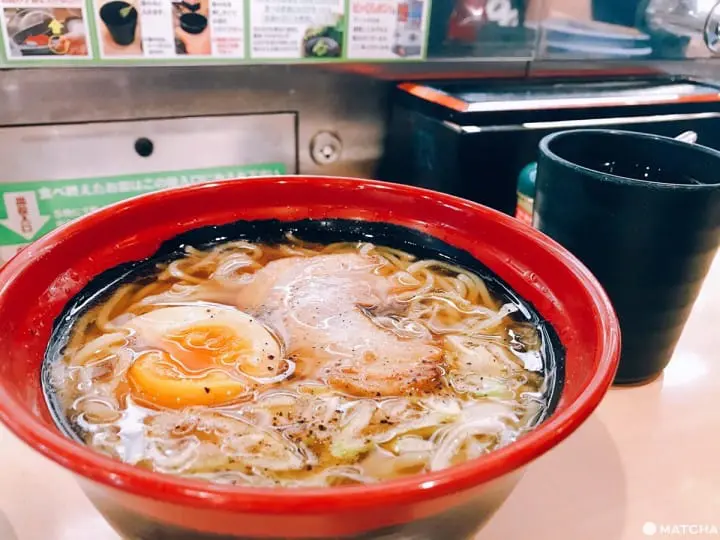
The Fish-Flavored Soy Sauce Ramen, made with a broth stewed from seven kinds of seafood including bonito, has a wonderfully aromatic and refreshing taste. Even if you choose a carb-free noodle option, there's no additional charge! (390 yen)

The Natural Spanish Mackerel with Yuzu, emitting a subtle yuzu fragrance, is not overly sour, and the yuzu aroma helps to eliminate the original faint fishy taste of the sashimi, making it a refreshing and non-greasy choice. (100 yen)
Dining at Kura Sushi costs around 2,000 yen/meal.
Our Recommended Branch: Kura Sushi Asakusa ROX Store
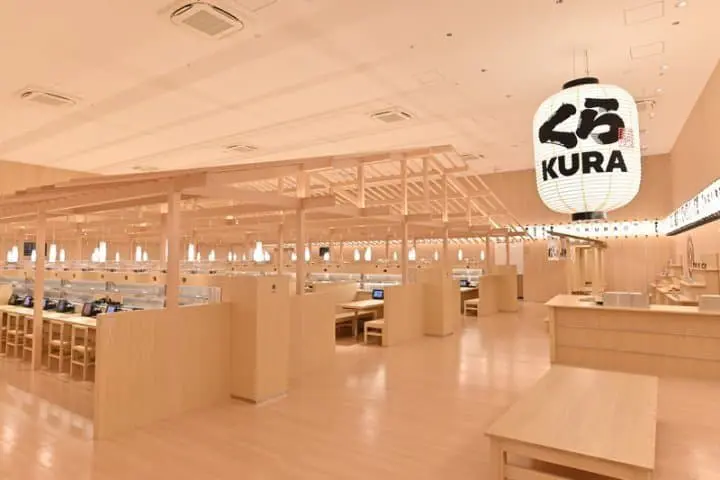
The Kura Sushi Asakusa ROX Store is quite spacious! It's located on the 4th floor of the ROX shopping mall in Asakusa. The restaurant's interior is designed with a Japanese festival theme, giving it a distinct Japanese ambiance.
If you don't want to wait in line, you can also use the app to make a reservation in advance. Additionally, there's a 'Gather the Fate' game you can play inside the store!
Kurazushi Asakusa ROX Store
Address: Tokyo, Taito, Asakusa 1-25-15 (4th floor of Asakusa ROX)
Business Hours: 11:00 - 23:00
Official Website: Kura Sushi
Other Kura Sushi Branches in Tokyo
*Click on the link for Google Map information.
- Shibuya: Kura Sushi Shibuya Ekimae
- Harajuku: Kura Sushi Global Flagship Store Harajuku
- Shinjuku: Kura Sushi Nishishinjuku
- Ginza: Kura Sushi Global Flagship Store Ginza
- Tokyo Skytree: Kura Sushi Global Flagship Store Oshiage Station (Tokyo Skytree) 1F
3. Ganso Zushi: Affordable Sushi in Asakusa, Shinjuku, and Other Areas

Every time you step into a Ganso Zushi restaurant, you can deeply appreciate the dedication of every staff member. Almost all employees make an effort to use simple foreign languages they've learned (such as Chinese, Cantonese, and English) to make ordering more comfortable for foreign travelers.
The menu not only offers high-value sushi options but also includes premium seafood like blackfin tuna and natural shrimp. You can savor the flavors of each season anytime.

The Blackfin Tuna Trio, with its vibrant color and rich, fatty texture, offers a unique taste for every part of the fish (600 yen).

For those who are a bit wary of eating raw seafood, we recommend trying the Grilled Eel and Soft, Tender Eel, which is coated in a sweet and savory sauce. It's so deliciously soft and delicate that it might make you want to order a bowl of rice to go with it (500 yen)!
Dining at Ganso Zushi costs between 1,000 and 2,000 yen per meal.
Major Ganso Zushi Branches in Tokyo
*Click on the link for Google Map information.
- Shinjuku: Ganso Sushi Shinjuku Nishiguchi
- Shibuya: Ganso Zushi Shibuya Center Gai
- Shimokitazawa: Ganso Zushi Shimokitazawa
- Akihabara: Ganso Zushi Akihabara Manseibashi Bridge
- Asakusa: Ganso Zushi Asakusa Honten (Main Branch)
4. Mawashi Sushi Katsu Midori: In Meguro, with Daily Changing Menus
The staff at Sushi Katsu Midori visits fish farms across the country, delivering seasonally abundant seafood directly to each of its branches. They continually develop new menus, offering a diverse selection of over 250 dishes. Another distinctive feature is their occasional in-store tuna dissection shows and rock-paper-scissors games for the chance to enjoy rare cuts of fish.

The fresh squid, with its chewiness and crispness, lets you truly taste its freshness. It's my top recommendation. (110 yen)

The rich pudding is a highlight of Katsumidori's dessert menu. The caramel in the shape of small fish allows you to adjust the sweetness of each bite, making it a delightful and creamy treat. (260 yen)
Dining at Sushi Katsu Midori costs between 2,000 and 3,000 yen per meal, but you can rest assured you'll enjoy every bite!
Major Sushi Katsu Midori Branches in Tokyo
- Meguro: Mawashi Sushi Katsu Midori Meguro
Official website: Sushi Katsumidori (Japanese)
5. Nemuro Hanamaru: Hokkaido Sushi near Tokyo Station
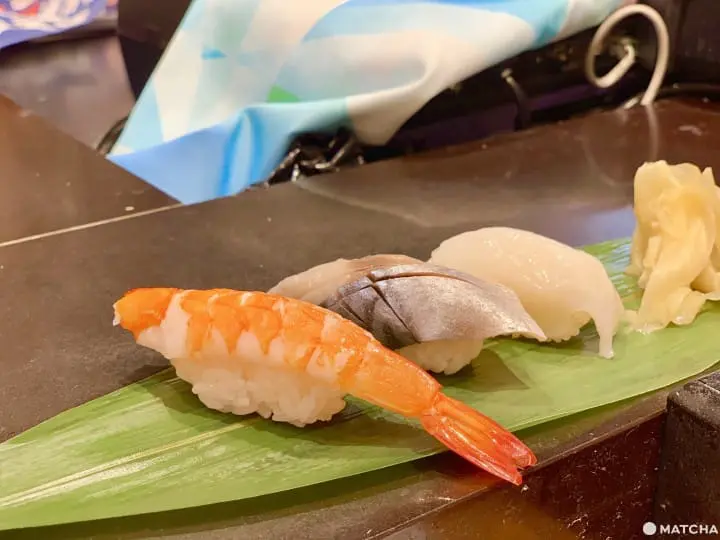
Nemuro in Hokkaido is a renowned 'fisherman's town' known for its authentic seafood. Nemuro Hanamaru offers a menu that creatively showcases the local seafood, and while they experiment with new dishes, they remain faithful to the essence of sushi, delivering the purest and freshest flavors.
Nemuro Hanamaru has both a conveyor belt and standing-style branches. In general, the menu and prices are quite similar, but the standing-style format offers a more immersive experience with the chefs preparing dishes right before your eyes, and they often recommend daily specials.
We couldn't resist and ordered the steamed shrimp, Hokkaido octopus legs, and their homemade mackerel. Each one was so delicious that you wanted to savor every bite. You can instantly tell that this place values freshness above all else. (100 yen each)

The Teppou Hanagani Miso Soup features seasonal crab with its natural sweetness, adding flavor to this simple yet delightful miso soup. (180 Yen)
Dining at Nemuro Hanamaru costs between 2,000 and 4,000 yen.
Nemuro Hanamaru Branches in Tokyo
There are only four branches of Nemuro Hanamaru in Tokyo, all located near Tokyo Station and the Ginza area. *Click on the link for Google Map information.
- Ginza: Kaitenzushi Nemuro Hanamaru Ginza, Standing Sushi Bar Nemuro Hanamaru Ginza Branch
- Tokyo Station: Kaitenzushi Nemuro Hanamaru KITTE Marunouchi, Standing Sushi Bar Nemuro Hanamaru
Official website: Nemuro Hanamaru
6. Kaiten Sushi Toriton: Sushi from Hokkaido at Tokyo Skytree
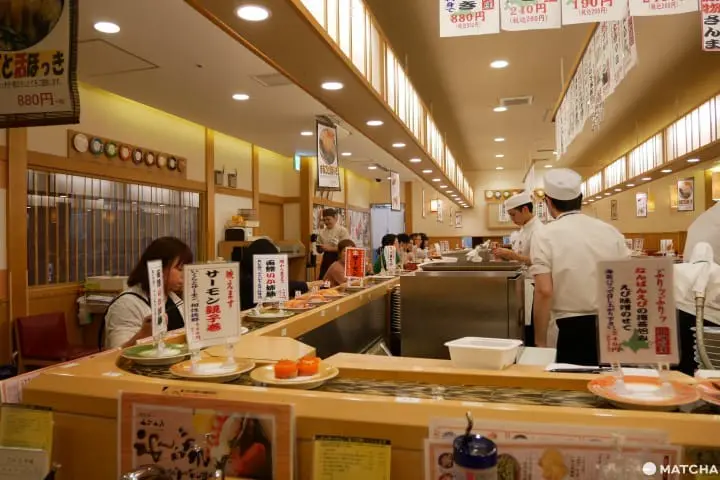
Don't have the time to fly to Hokkaido for fresh seafood? TORITON will instantly make you feel like you're in Hokkaido.
Their Tokyo Skytree Solamachi branch offers a selection of meticulously chosen Hokkaido seafood that is incredibly fresh!
The chefs adjust the amount of vinegar and salt based on the size of the fish each day, ensuring you get the most delicious taste of each type of fish. The staff are incredibly friendly, and once you sit down, the head chef or manager often comes over to introduce themselves.

The sea urchin is incredibly fresh, and sweet, with a delicate texture that practically melts in your mouth. It's irresistible! (Current price: 650 yen)

They offer two types of soup daily, the miso and ginger instantly make you feel warm, and despite using leftovers, it is still incredibly delicious, leaving you wanting more with each spoonful. (440 yen)
A sushi meal at Toriton costs between 2,000 and 4,000 yen.
Kaiten Sushi Toriton Branch in Tokyo
- Tokyo Skytree Solamachi: Kaiten Sushi Toriton
Official website: Kaiten Sushi Toriton
7. Heiroku Sushi: With Branches in Shinjuku and Shibuya

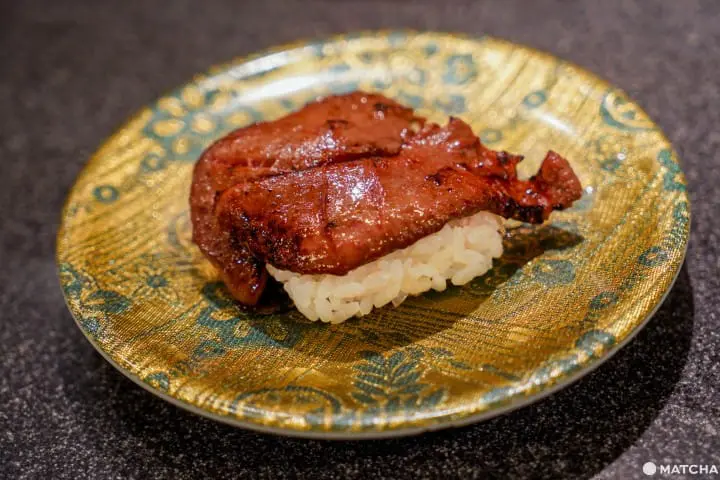
Thick-cut beef tongue sushi, using beef tongue provided by the renowned Sendai beef tongue restaurant 'Beko Masamune'. The beef tongue is generously sliced into large pieces, with a chewy texture and a light, refreshing taste. Taking a bite feels like enjoying a mini beef tongue-set meal in one mouthful. (390 yen)
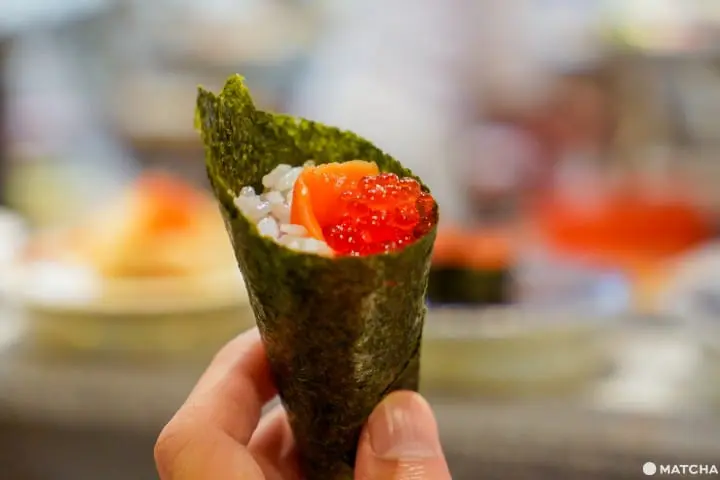
The Salmon Roe Parent-Child Hand Roll offers with every bite a dual taste of both salmon and salmon roe. Each bite is filled with a fresh seafood flavor. The salmon slices are tender and smooth, while the salmon roe adds a distinct texture, enriching the taste experience on the palate. (290 yen)
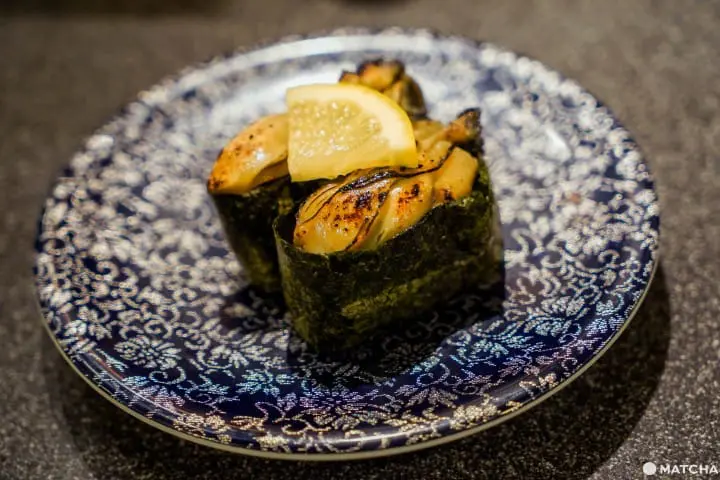
After being marinated in garlic olive oil, the steamed oysters are prepared to perfection, with excess fat removed to enhance their firmness. They have a chewier texture than you might expect, making them a delightful treat. Even those who are wary of the typically soft texture of oysters can enjoy them with confidence. (290 yen)
Dining at Heiroku Sushi costs around 2,000 yen/meal.
Heiroku Sushi Branches in Tokyo
- Shinjuku: Heiroku Sushi Tokyo Shinjuku Okubo
- Shibuya: Heiroku Sushi Tokyo Shibuya Omotesando Branch
8. Maguro Ton'ya Miura Misaki Port: Affordable Sushi in Ueno

Picture courtesy of PR TIMES
Located around Ameya-Yokocho in Ueno, Maguro Ton'ya Miura Misaki Port Ueno Branch is a convenient spot for travelers. Additionally, they have branches in Yokohama, Shin-Yokohama, Mizonokuchi, and Okinawa.
You can probably tell from the name itself that their specialty is tuna sushi. The tuna used in their restaurant is fresh and directly sourced from Miura Misaki Port, which is known for its high tuna catch. They emphasize proper refrigeration techniques during transportation to maintain the excellent quality of the tuna. Apart from the fresh ingredients, the sushi at the restaurant is reasonably priced. They offer various tuna sushi options such as tuna nigiri, tuna rolls, and tuna gunkan sushi, each with different complementary ingredients.
Besides their signature tuna offerings, they also provide a variety of other sushi dishes. For example, they have salmon roe-topped salmon roe battleships, mountainous red shrimp battleships, and thick eel nigiri.
The portion size of each sushi piece is quite generous. Fresh, delicious, and of great value, it's no wonder "Maguro Ton'ya Miura Misaki Port" is consistently popular.
Dining at Maguro Ton'ya Miura Misaki Port costs between 2,000 and 4,000 yen per meal.
Maguro Ton'ya Miura Misaki Port Branches in Tokyo
Ueno: Miura Misaki Port Ueno Branch
Other Branches (for reference): Yokohama, Shin-Yokohama, Mizonokuchi, Okinawa
9. Sushi Choshimaru: Near Tokyo Dome

Picture courtesy of PR TIMES
Sushi Choshimaru, a conveyor belt sushi restaurant from Chiba in the Kanto region, selects seafood products from Choshi Port in Chiba and various other regions across Japan.
In addition to classic sashimi sushi, they offer different seasonal seafood daily. Even if you visit every day, there's a chance to enjoy seafood from different regions and seasons.

Picture courtesy of PR TIMES
We highly recommend the 'Fresh Five Types of Fish' at Sushi Choshimaru. This selection includes the freshest five types of seafood chosen daily, and the delightful freshness and sweetness always surpass the expectations of regular conveyor belt sushi. It's a delightful surprise for seafood enthusiasts.

Picture courtesy of PR TIMES
While the sushi prices here are slightly higher than those at Sushiro and Kura Sushi (starting at 320 yen per plate), it remains popular due to its freshness and variety. On weekdays after 2 p.m., they offer unlimited servings of seafood miso soup, and the seafood ingredients used vary each day!
Dining at Sushi Choshimaru costs between 2,000 and 3,000 yen/meal.
Sushi Choshimaru Braches in Tokyo
- Near Tokyo Dome: Sushi Choshimaru
10. Uobei: With Branches in Shibuya and Kichijoji

Picture courtesy of PR TIMES
If you want to try budget conveyor belt sushi other than Sushiro and Kura Sushi, you might consider 'Uobei.' Uobei specializes in 'non-revolving conveyor belt sushi,' which ensures hygiene, cleanliness, and peace of mind for customers.
On the other hand, regular conveyor belt sushi restaurants must discard sushi that has been on the belt for too long. Uobei, however, doesn't face this issue, allowing them to offer high-quality, cost-effective options to customers.

Picture courtesy of PR TIMES
At Uobei, a plate of sushi dishes typically ranges from 110 yen to 160 yen, with a diverse menu selection. They use a slightly sweet soy sauce, and their wasabi is delicious, enhancing the flavor of the sashimi even further.
Thanks to its affordable prices and clean environment, Uobei was ranked as the number one conveyor belt sushi chain by Japanese women in 2021. Additionally, they offer a variety of items like French fries, fried chicken, desserts, and more, making it a great choice for family outings with children.
Dining at Uobei costs between 1,000 and 2,000 yen/meal.
Uobei Branches in Tokyo
- Shibuya: Uobei Shibuya Dogenzaka Store
- Shin-Okubo (near Shinjuku): Uobei Shin-Okubo
- Kichijoji: Uobei Kichijoji
Japanese Sushi Menu and Translation Guide
One of the advantages of conveyor belt sushi is being able to visually see the variety of seafood being served.
Still, there may be times when you want to eat, for example, salmon, but can't identify it on the menu. Alternatively, you might want to ask the chef for a special order.
In this section, we provide a brief overview of common menu categories and items often found in conveyor belt sushi restaurants, their English translation, and their transliteration.
| Fish | English | Transliteration |
| サーモン | Salmon | sa-mon |
| はまち | Yellowfin Tuna | hamachi |
| かつお | Skipjack tuna | katsuo |
| あじ | Caranginae | aji |
| いわし | Sardine | iwashi |
| マグロ | Tuna | maguro |
| 中トロ | Fatty Tuna | chuutoro |
| タイ | Red Snapper | tai |
| さば | Mackerel | saba |
| えんがわ | Flatfish | engawa |
| Seafood | English | Transliteration |
| うに | Sea urchin | uni |
| あわび | Abalone | awabi |
| いくら | Salmon roe | ikura |
| えび | Shrimp | ebi |
| 甘えび | Sweet shrimp | amaebi |
| ほたて | Scallops | hotate |
| いか | Squid | ika |
| かにみそ | Crab Miso | kanimiso |
| Others | English | Transliteration |
| いなり | Inari | inari |
| うなぎ | Eel | unagi |
| 玉子焼 | Tamagoyaki | tamagoyaki |
| 炙りサーモン | Grilled salmon | aburisa-mon |
| 鉄火巻 | Tuna roll | tekkamaki |
| かっぱ巻 | Cucumber roll | kappamaki |
How to ask for sushi without wasabi in Japanese
Here are Japanese phrases we recommend keeping note of that will definitely come in handy when eating sushi:
1. わさび抜きでお願いします。
Meaning: Please remove the wasabi.
Pronunciation: Wasabi nuki de onegai shimasu.
2. 会計お願いします。
Meaning: Please bring the bill.
Pronunciation: Kaikei onegai shimasu.
Enjoy Sushi in Tokyo!
If you're feeling overwhelmed after considering these ten options, don't worry! Our team has tried numerous places and has some insights to share. If you prioritize freshness, we recommend the two brands from Hokkaido. If you're looking for a diverse menu, Sushiro and Kura Sushi are excellent choices.
And if you're concerned about language barriers, you can always visit the original sushi restaurants like Ganso Zushi to experience the friendly service from the staff. Enjoy your sushi adventure!
FAQ
How much is good sushi in Tokyo?
The cost of sushi in Tokyo can vary widely depending on the restaurant's quality, reputation, location, and the type of sushi being served. On average, prices for sushi in Tokyo can range from around 1,000 to 20,000 yen (approximately 10 to 200 USD) per person for a meal, or even higher at high-end or exclusive sushi establishments.
At more casual sushi restaurants or conveyor belt sushi (kaitenzushi) places, you can expect to pay around 100 to 500 yen per plate, depending on the type and quality of sushi. For a standard sushi meal at a mid-range sushi restaurant in Tokyo, you might spend around 3,000 to 7,000 yen per person.
If you are looking to experience high-end sushi at renowned sushi bars or Michelin-starred establishments in Tokyo, be prepared to pay significantly more, with prices ranging from 20,000 yen and up per person for an unforgettable sushi dining experience prepared by master chefs using top-quality fish and ingredients.
Ultimately, the price of sushi in Tokyo can vary significantly depending on your preferences and the specific restaurant you choose, from budget-friendly options to exclusive and luxurious dining experiences.
Why is sushi so expensive in Japan?
Sushi in Japan commands high prices for various reasons. Japanese sushi chefs prioritize top-quality, fresh ingredients like fish and seafood, elevating costs. The skilled craftsmanship required for sushi making, precise techniques, and intricate presentation also contribute to the expense. Additionally, the labor-intensive nature of sushi preparation, coupled with the high rent prices in prime locations like Tokyo, further influences the pricing. Sushi's deep-rooted tradition in Japanese culture and reputation for excellence justify the premium costs, as does the limited seating and exclusivity offered by renowned sushi establishments. Seasonal variability in ingredient availability and market prices also impact the overall expense of sushi dining in Japan, creating a culinary experience valued for its quality, tradition, and cultural significance.
How to find the best sushi in Tokyo?
To uncover top-notch sushi experiences in the vibrant city, start by researching highly recommended sushi restaurants online and consulting platforms like TripAdvisor for reviews. Seek insights from locals, hotel staff, or tour guides for authentic dining spots, explore the Michelin Guide for esteemed recommendations, and visit the Tsukiji Outer Market for fresh seafood and casual sushi options. Secure reservations using apps like OpenTable, indulge in an omakase meal at a renowned restaurant, and discover hidden sushi gems with local recommendations. For a curated culinary journey, consider joining a sushi food tour to explore Tokyo's diverse sushi scene and savor the finest sushi offerings the city has to offer.
Which part of Japan has the best sushi?
Toyama prefecture, which has fishing ports in the Sea of Japan, is regarded as the best place for sushi in Japan, with Ishikawa prefecture and Hokkaido prefecture following closely behind.
Tokyo is also widely regarded as one of the best places in Japan to experience exceptional sushi. The city is a sushi paradise, home to a vast array of sushi restaurants ranging from high-end Michelin-starred establishments to neighborhood sushi joints. Tokyo's sushi reputation stems from its access to top-quality seafood sourced from Tsukiji (now relocated to Toyosu) and other renowned fish markets. The city's sushi culture is rich and diverse, offering traditional Edomae sushi as well as innovative and creative sushi creations.
While Tokyo stands out as a top sushi destination, other regions like Hokkaido, known for its fresh seafood, and Osaka, celebrated for its unique sushi styles, also offer delicious and distinct sushi experiences worth exploring.
How healthy is sushi?
Sushi can be a healthy dining option thanks to its nutrient-rich ingredients like fresh fish, vegetables, and seaweed providing essential nutrients and lean protein. With fish varieties like salmon and tuna rich in omega-3 fatty acids beneficial for heart health, sushi is a low-saturated fat choice compared to other fast foods. Portion control is promoted with moderate-sized servings, although rice content should be considered due to carbohydrate intake and sugar seasoning. While sushi is generally a healthier choice, it's essential to be mindful of sodium levels in soy sauce and ensure raw fish is sourced from reputable sources for food safety. By incorporating a variety of sushi types, including vegetable rolls, and being cautious with accompaniments, sushi can be a flavorful and nutritious addition to a balanced diet.






































![[Coupon Available] Attention Overseas Winter Sports Fans! Nagano's Sports Depot Has Evolved](https://resources.matcha-jp.com/resize/720x2000/2026/01/05-254819.webp)
![[2 hours from Tokyo ] 10 Quiet and Breathtaking Views of Mount Fuji in Yamanashi Hokuto City , Yamanashi - Part 2](https://resources.matcha-jp.com/resize/720x2000/2025/12/16-253037.webp)